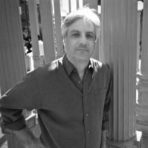
-III-
This is why I’m not (cannot be) a proper diarist—because for all my riffs on serendipity, I’m beginning today with canned material. It’s a little after seven in the morning, and I want to address something I left out yesterday about when Rae and I were walking back. Sometimes, life feels like a dream, as if it’s not quite real or three-dimensional, as if I can’t quite believe where I am. I’ve had that sense somewhat in Rome, but not because it seems ephemeral, more because I’m amazed we’ve pulled this off. This is not (or hasn’t been yet) who we are, not this sort of trip, not spending this sort of money on ourselves. But that does not extend to Rome itself, which is utterly real and concretized, all that history, the physicality of it, not residue but enfolded, past into the present, the long line of its particular continuity. It’s like a corner of the multiverse, like every place or city, a universe unto itself. I’ve been thinking about that lately, this world so real and vivid, people walking the paths below us along the banks of the Tiber, or listening to a musician in a small church square while sipping wine and coffee, clogging up the alley-like vias of Trastevere: all that breathing, all that language, all that life.
And yet, tomorrow, when we leave, it will all fall into abstraction. It will exist for us only as memory. Thinking about that, I am struck again by the notion of the earth as its own infinite series of multiverses, one for every person, every place, every second, every glancing slice of sun. We drop in here and then we leave again but Rome goes on without us, as if it has always been here and always will. Its evanescence is the point but so too its whisper of eternity—or, at least, eternity on human terms. Afterward, Florence, an abstraction now, will become the new universe in which we are existing, and then Naples and the Amalfi Coast. Eventually, we will be home again, and this whole trip will recede into dream.
Speaking of dream, a very strange one last night, in which Rae and I were back on Blackburn (itself a lost piece of the multiverse), where we lived when we first came to Los Angeles. In the master bathroom, two people: Noah, as he is now, and my father, impossibly smooth-faced and no older than twenty, wearing round, framed glasses and staring into the mirror over the vanity as inscrutable as a Sphinx. I wonder if this has to do with the Sphinx we saw yesterday at the Villa Borghese, leering at us with its cat’s smile, although my father remains as impassive as a piece of uncut stone. Somehow, I come to understand that he is young because I have been thinking about him at this age, that everything in the dream appears through the temporal filter of my gaze. The multiverse again, or a series of multiverses, the ongoing bend of time and place and tide.
And that is where we are this morning, as we wander through the bustle of the city: Via Veneto, the offices of Il Messaggero (the most widely read Roman daily paper), Piazza Colonna, with its intricate marble column honoring Marcus Aurelius, a scroll of sweeping narrative reliefs completed before 193 AD.
Our destination is Il Convento dei Cappuccini, a monastery where the Capuchin monks, known for their humility, their devotion to the sick and the poor, began to assemble, in the eighteenth century, an ossuary with bones harvested, in part, from the catacombs. There are holes (holes? chasms) in my understanding of the history, but I can say this is among the weirdest places I have ever seen. Hiding in plain sight, in the midst of the urban bustle, next door to a luxury hotel—roof bar, 11th floor, a door sign promises—the ossuary features twenty or more rooms and display areas, each devoted to a tableau or still life (and yes, the irony is intended) composed of human bones. Skulls, femurs, tibiae, scapulae, ulnae, all piled against each other like bricks or arranged to create images and icons.
In one such arrangement, characterized in the complimentary brochure as whimsical, a pair of arms, one clothed, the other not, cross in a bodiless embrace. In another, a set of small bones (vertebrae?) arranged in the shape of an hourglass sit between two shoulder blades that represent a pair of wings. The theme is tempus fugit, time is flying, which seems both pointed and correct. It reminds me of the burial spaces we saw in the catacombs for young children; tragic, yes, but also mitigated by the fact that every child from the year 300, no matter the duration of their lifespan, has also long since been consecrated to the earth. Here, too, all these skulls and leg bones, some crossed the way a pirate flag might show them, add up to a sum of human death and devastation that becomes its own apocalypse. It casts in stark relief the stakes of living, while also illustrating the distinction, presented by the priest who was our guide at the Catacombs, between a resting place, or way station, and a more permanent city of the dead.


